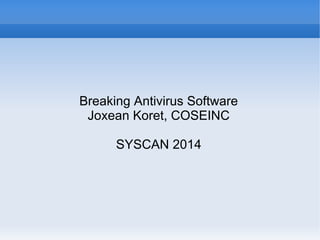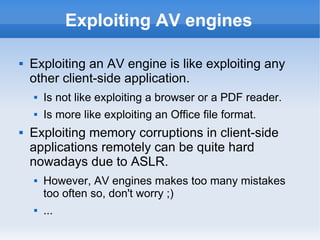This document discusses breaking antivirus software by finding vulnerabilities in antivirus engines. It begins by describing how antivirus engines work and how their functionality can increase attack surfaces. The document then discusses initial experiments fuzzing several antivirus engines, finding vulnerabilities like heap overflows, integer overflows, and remote command injections. Specific vulnerabilities are also listed for engines from Avast, AVG, Avira, BitDefender, ClamAV, Comodo, DrWeb, ESET, F-Prot, F-Secure, Panda, and eScan. Statistics on initial fuzzing results for ClamAV, F-Secure, and Avast are also provided.










































































































